This post may contain affiliate links. Please see our disclosure policy.
Canning cherries is one of my favorite ways to preserve these sweet summertime jewels. They’re delicious in all my winter baking, and they’re tasty right out of the jar, too!
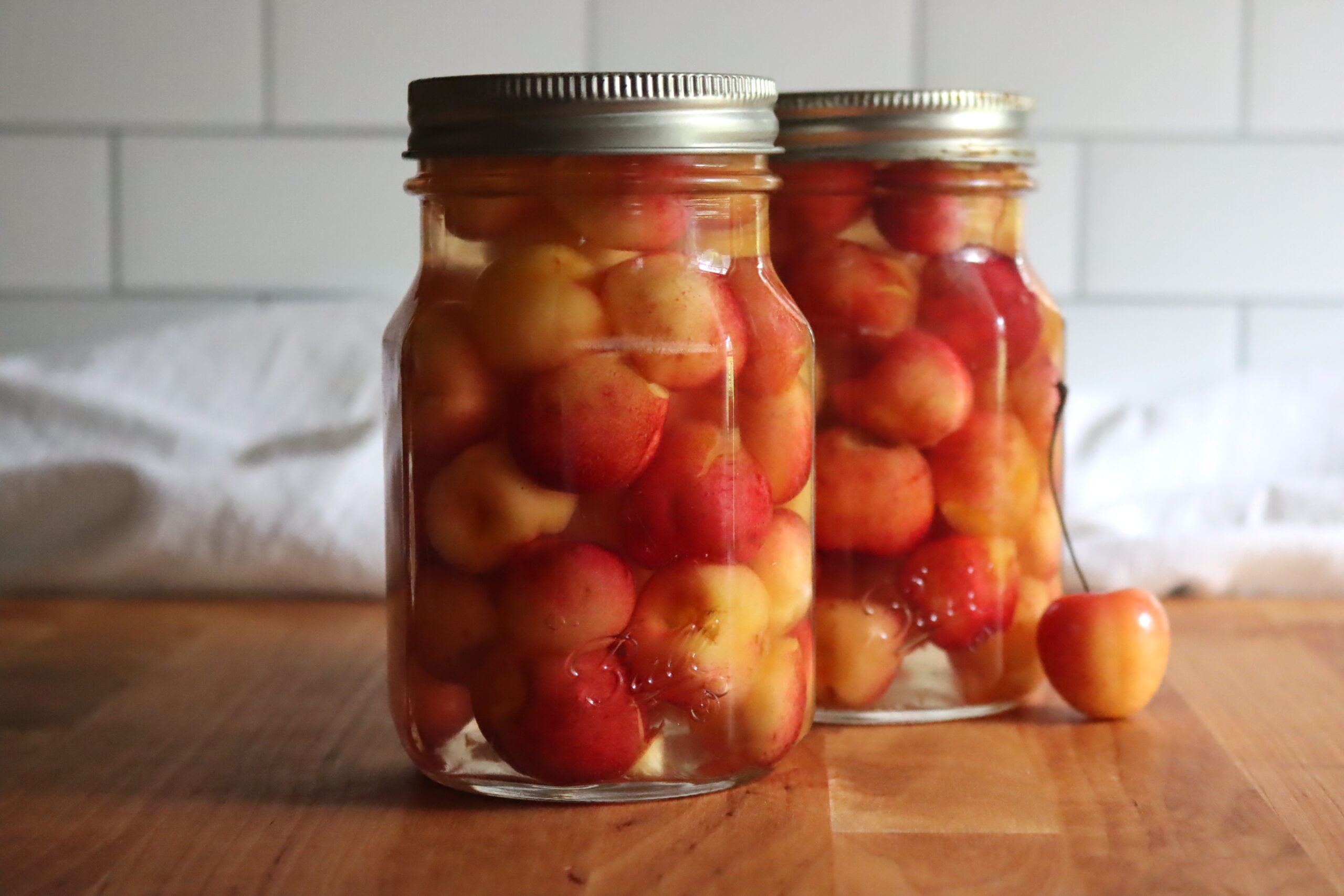
If you’ve got a bountiful cherry harvest or have scored a great deal on these delightful red jewels, canning cherries is a superb way to preserve their tangy sweetness to enjoy all year round.
Can you imagine – being able to enjoy a spoonful of cherries that’s equal parts tart and sweet? Canning cherries isn’t as hard as you might think, and it’s a great option for folks with limited freezer space who want to preserve their hard-earned cherry harvest (or scored a great deal on cherries at the farmer’s market).
This simple recipe for canning syrup (in water, juice, or syrup) works for any type of cherry, from classic sweet cherries like Bing to Northern sour cherries and the blushing rainier cherries famous in the Pacific Northwest.
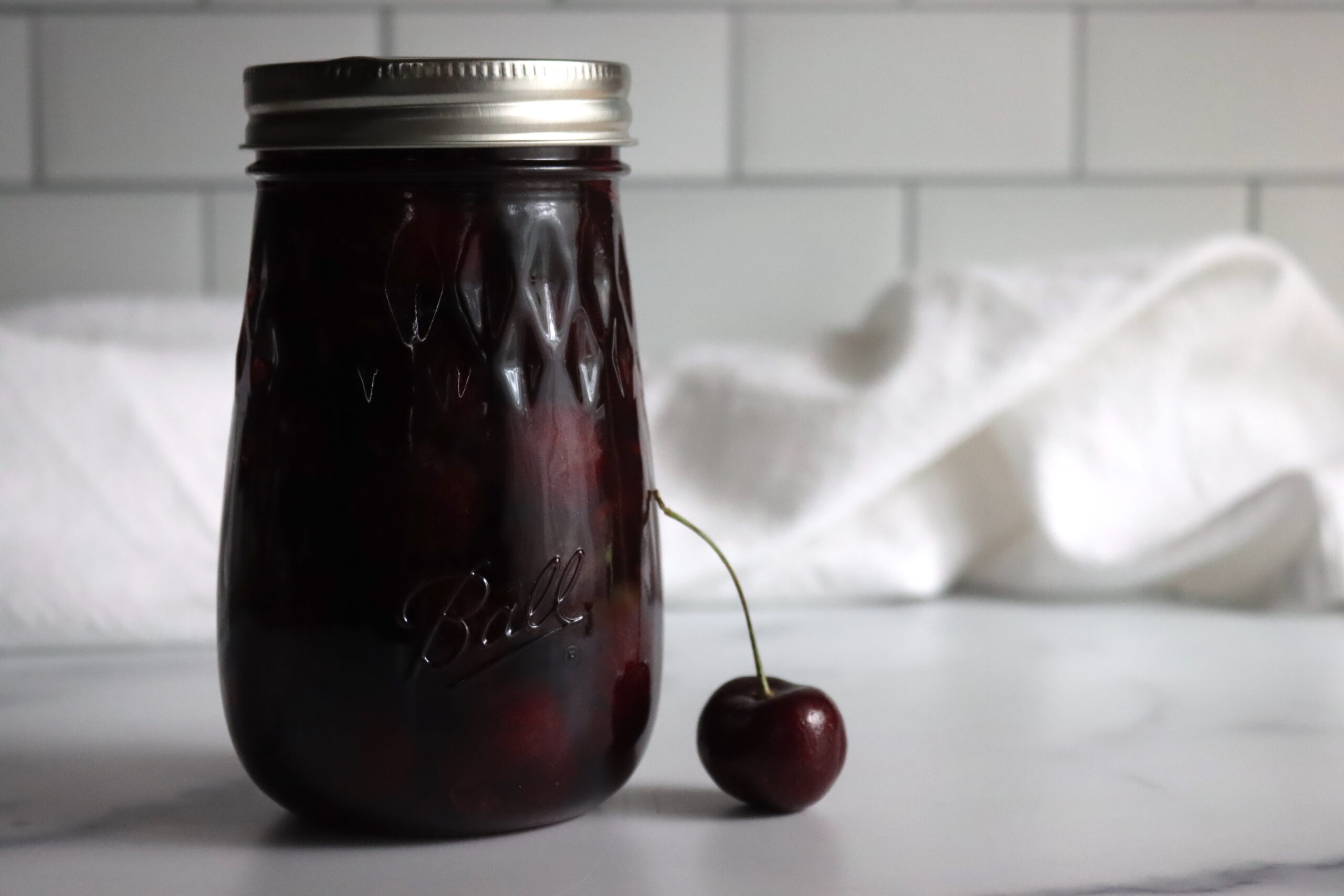
Ingredients for Cherries
The ingredients for canning cherries are quite simple. To make a canner batch of seven quarts, you’ll need the following:
- Fresh cherries
- Water, apple juice, grape juice, or syrup
You’ll need about 10 to 12 pounds of cherries for a canner load of 9 pints, or about 17 to 18 lbs of fruit for a canner load of 7 quarts. I tend to scan them in pints, as that’s how we use them, but you can use smaller jars (half pints), which use the same canning time as pints, or full-sized quarts, which take more time in the canner.
Cherries cannot be canned in half gallons or any jar larger than a quart.
Syrup for Canning Cherries
It’s perfectly fine to can cherries in water or fruit juice (apple or grape), but most people prefer to can cherries in syrup to help maintain their natural sweetness and flavor. Cherries canned in water taste washed out, as some of the natural sugars in the cherries go into the water in the jar.
I like to can cherries in extra light syrup, which doesn’t make them any sweeter, it just maintains their natural sweetness. The syrup is about as sweet as the cherries are, so they’re just preserved (not candied).
That said, you can use any type of sugar syrup you like, all the way up to heavy syrup for something that’s more like a Merichino cherry.
Here are the sugar amounts for various canning syrups for a canner load of 9 pints:
- Extra-light syrup: 3/4 cups sugar to 6 1/2 cups water
- Light syrup: 1 1/2 cups sugar to 5 3/4 cups water
- Medium syrup: 2 1/4 cups sugar to 5 1/4 cups water
- Heavy syrup: 3 1/4 cups sugar to 5 cups water
Each pint will need about 1/2 cup of syrup, roughly. The total amount depends on how well you pack the jars.
If you’re canning in quarts, you’ll need about 1 cup of syrup (and twice as many cherries per jar).
Canning Cherries
Before you can do anything else, you need to decide what type of cherries you’re going to use. The most common varieties used in canning include Bing, Rainier, and Montmorency. Choose cherries that are firm, juicy, and plump with a shiny, unblemished skin.
The ideal color will depend on the type – Bing cherries should have a deep, dark maroon shade, while Rainiers are a light, almost golden hue when ripe. For those who prefer their fruit a little tart, the Montmorency cherry – with its bright red, almost sour profile – is a perfect choice. They’re also known to retain their firm texture when cooked, making them a superb pickling and preserving selection.
Keep in mind that if you choose Rainier cherries, they’ll look great initially, but they’ll fade to a pale yellow, so they won’t always have that classic Rainier cherry look in the jar.
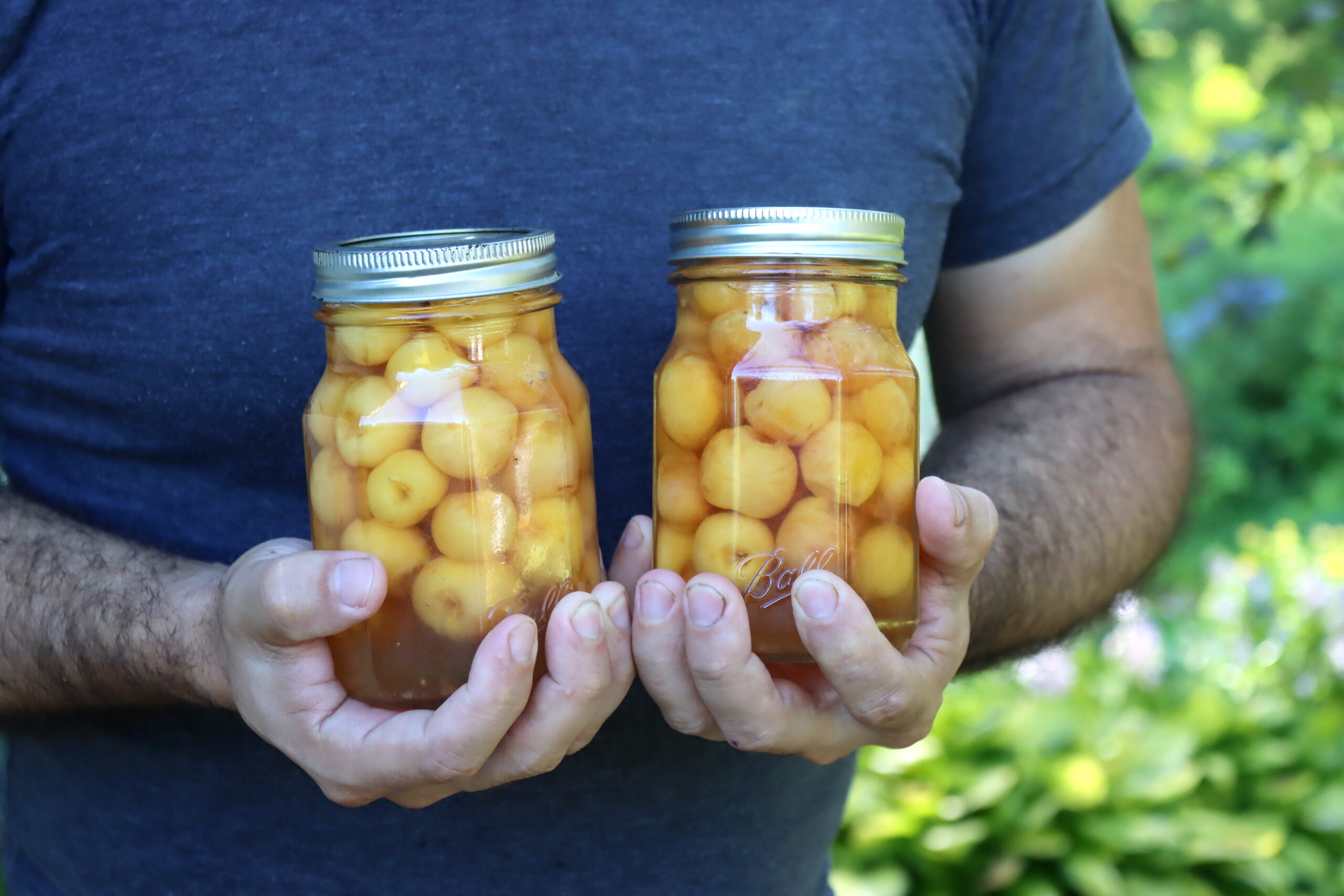
Taste one or two before you start your canning process to ensure they’re sweet and full of flavor. You want to begin the process with cherries that are as ripe and sweet as possible. Avoid overripe fruit, as it can get mushy when canned, while underripe fruit will soften over time but might not impart the right level of sweetness or flavor.
Once you have your cherries and they’ve been washed, you need to remove the pits (if desired). Canning cherries can include pitting or leaving the cherries whole. If you decide to remove the pits, use a specialized pitter or the trusty chopstick method to remove the stones (simply push the chopstick through the stem end of the cherry to pop out the pit).
If you’re pitting the cherries, put them in a bit of water with ascorbic acid (lemon juice) so the cherries don’t get discolored. If you choose to can unpitted cherries, prick the skins on the opposite sides of the fruits with a clean needle (this will prevent splitting).
Then, you’ll prepare your syrup. Depending on your taste and preservation goals, you have a choice between using water, syrup, apple juice, or white grape juice to can your cherries. You can also mix these up to create unique flavors.
If you decide to hot pack, you’ll bring the liquid to a boil before allowing it to simmer. Blanch the cherries, then load the jars and pour hot liquid on top of them. If you prefer a raw pack, simply add the hot water, syrup, or juice to each jar. You’ll add ½ cup to each jar.
Once the jars are loaded with the fruit and syrup, check that you’ve left ½” headspace. Adjust the lids on the jars and tighten the bands until they’re fingertip tight. Then, load them into the canner.
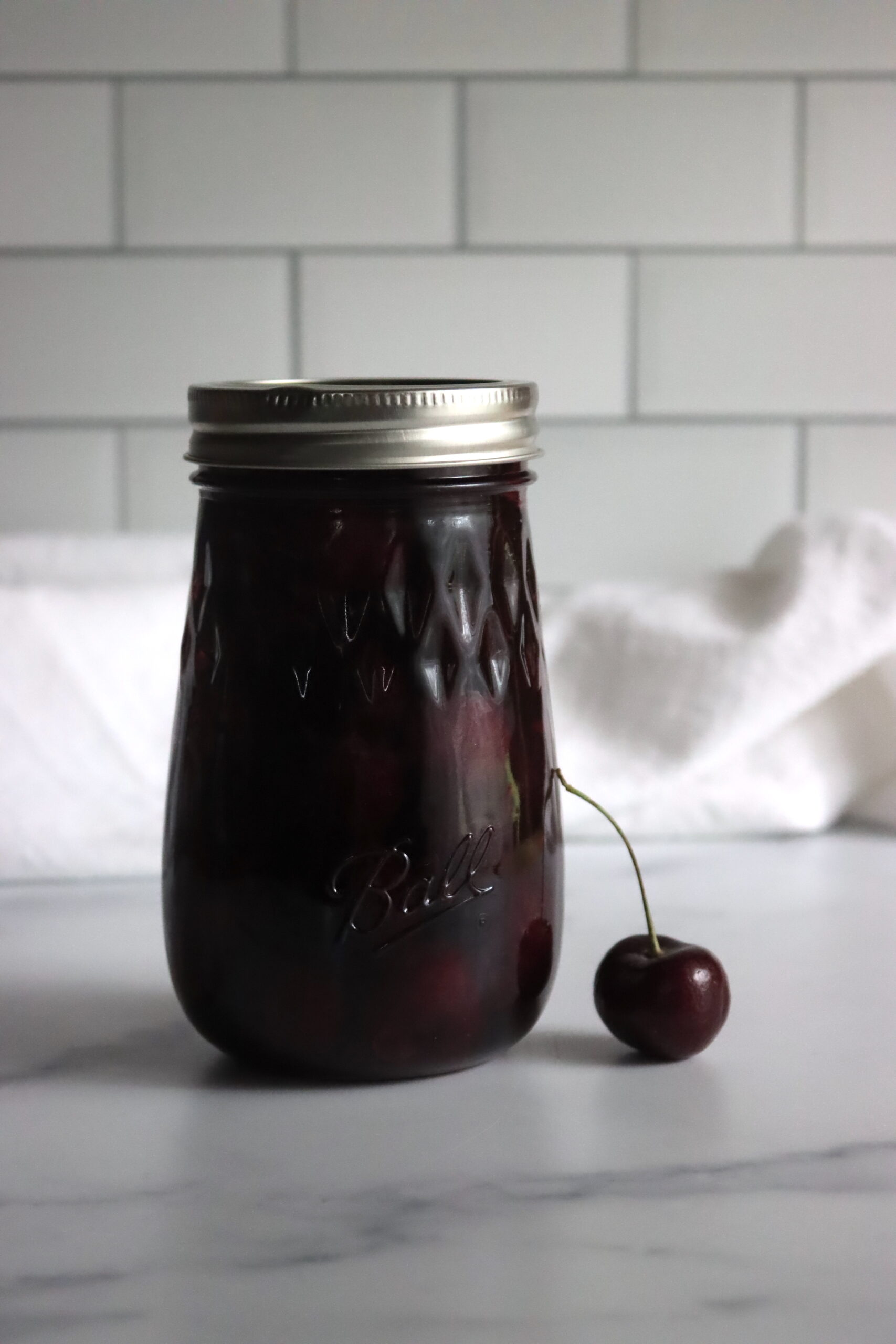
You can choose to water bath or pressure can your jars of cherries. For hot-packed quarts in a water bath, you’ll process them for 20 minutes (adjust for altitude as needed). For raw-packed quarts, you’ll process for 25 minutes.
If you choose to use a pressure canner, you’ll process quarts for 10 minutes (regardless of whether you are hot or raw packed) at 6 lbs pressure in a dial-gauge pressure canner. If you use a weighted-gauge pressure canner, you’ll process for the same amount of time but at 5 lbs pressure.
When the canning time has finished, you can remove jars from the water bath canner. Wait until the canner has depressurized after turning off the heat and allowing the canner to cool if you use a pressure canner. Remove the jars from the canner and allow them to rest at room temperature for 24 hours. Check the seals, label, and store the jars for up to a year.
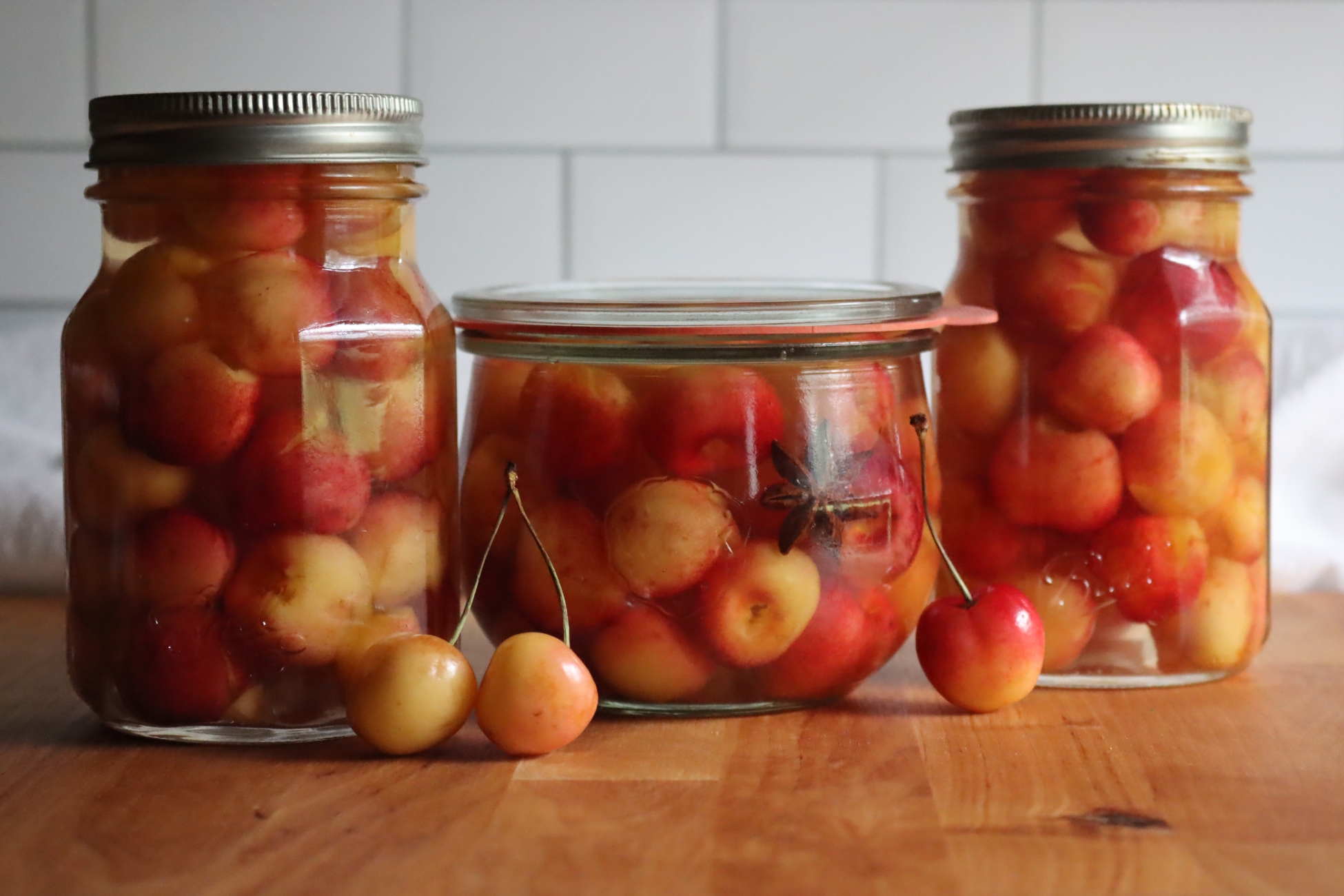
Canning Times for Cherries
The table below summarizes the canning times for cherries, based on raw or hot pack, and jar size:

Cherries can also be pressure canned, and when pressure canning, the canning times remain the same but the pressure changes with altitude.
The times below are for dial gauge canners (like Presto canners):

With a weighted gauge canner, you only have a choice of 5, 10 or 15 pounds of pressure (but they maintain the pressure on their own). They’re more convenient in many ways, but you have to choose a preset pressure.
Here are the timetables for canning cherries in a Weighted Gauge Pressure Canner (like All American Brand):

Serving Cherries
Whether you’re looking to add a burst of sweet and tangy flavor or a pop of vibrant color to your creations, canned cherries can be a delicious addition to your culinary repertoire. Here are some ideas for serving canned cherries:
- Top your favorite desserts like ice cream sundaes, cheesecakes, or yogurt parfaits with canned cherries for a fruity twist.
- Incorporate canned cherries into baked goods such as pies, cobblers, muffins, or cakes to add a luscious fruity element.
- Pair canned cherries with savory dishes like pork tenderloin, roasted duck, or grilled chicken for a delightful sweet and savory contrast.
- Add canned cherries to waffles, pancakes, or oatmeal for a delicious breakfast treat that will kickstart your day on a sweet note.
When using canned cherries, they’re typically ready to eat as they are already cooked and preserved in syrup.

Canning Cherries
Ingredients
- Fresh cherries
- Water, apple juice, white grape juice, or syrup (optional)
Instructions
- Choose firm, juicy cherries like Bing, Rainier, or Montmorency with the ideal color for the type. Make sure the cherries are sweet and ripe before canning; avoid overripe or underripe fruits for the best results.
- Either pit or leave the cherries whole. You can use a pitter or the paperclip method to remove the pits. Dip pitted cherries in lemon juice and water to prevent discoloration. If you're not planning to pit the cherries, prick the skins with a clean needle to prevent discoloration.
- Prepare your syrup by adding 3 ½ cups of water, syrup, apple juice or white grape juice to a stockpot and bringing it to a low simmer. Add the blanched cherries for the hot pack method. Bring to a boil, simmer, then load into the jars.
- For the raw pack method, pack the jars with raw cherries, then pour the liquid over the jars.
- Check for ½" headspace. Wipe the jar rims, then add the lids and bands. Tighten fingertips tight.
- Water bath hot-packed quarts for 20 mins, raw-packed quarts for 25 mins; pressure can at 6 lbs pressure for 10 mins or 5 lbs for weighted-gauge.
- For a pressure canner, allow the canner to pressure, then remove the jars. The jars can be removed from the water bath canner as soon as the canning time has finished. Let the jars rest for 24 hours, check the seals, label, and store. See guidance in the article for elevations above 1,000 feet.
Notes
Syrup for Canning Cherries
It's perfectly fine to can cherries in water or fruit juice (apple or grape), but most people prefer to can cherries in syrup to help maintain their natural sweetness and flavor. Cherries canned in water taste washed out, as some of the natural sugars in the cherries go into the water in the jar. I like to can cherries in extra light syrup, which doesn't make them any sweeter, it just maintains their natural sweetness. The syrup is about as sweet as the cherries are, so they're just preserved (not candied). That said, you can use any type of sugar syrup you like, all the way up to heavy syrup for something that's more like a Merichino cherry. Here are the sugar amounts for various canning syrups for a canner load of 9 pints:- Extra-light syrup: 3/4 cups sugar to 6 1/2 cups water
- Light syrup: 1 1/2 cups sugar to 5 3/4 cups water
- Medium syrup: 2 1/4 cups sugar to 5 1/4 cups water
- Heavy syrup: 3 1/4 cups sugar to 5 cups water
Summer Fruit Canning Recipes
Putting up more fruit this summer? I have plenty of fruit canning recipes…
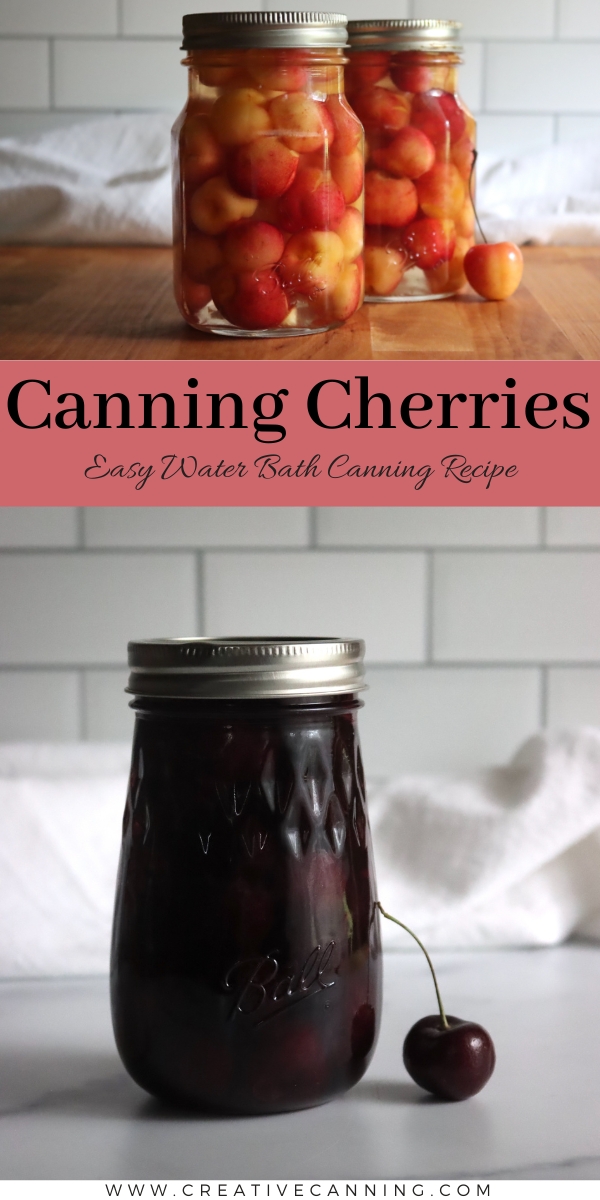
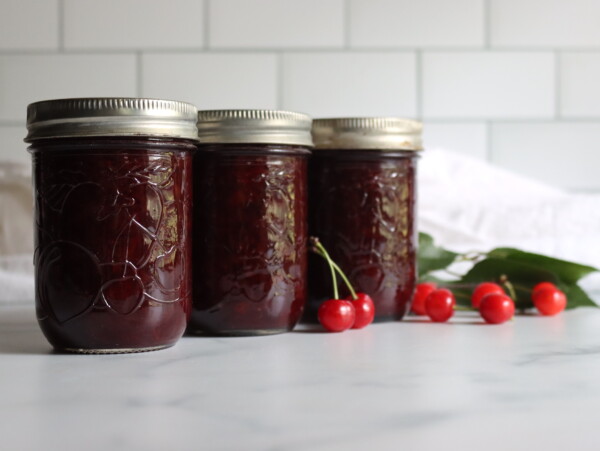
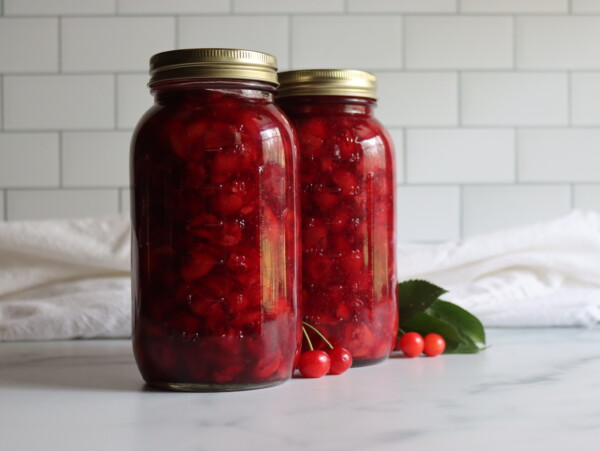
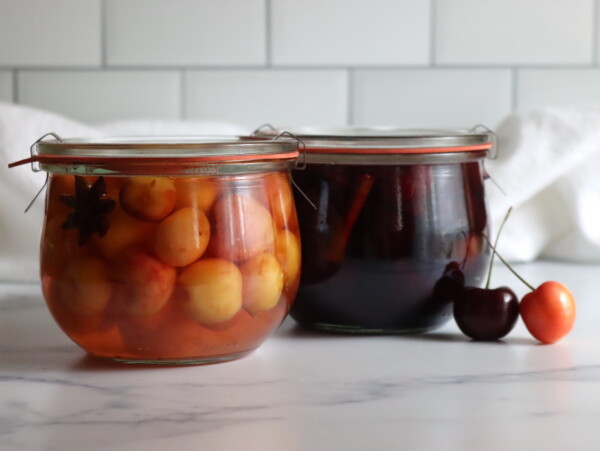
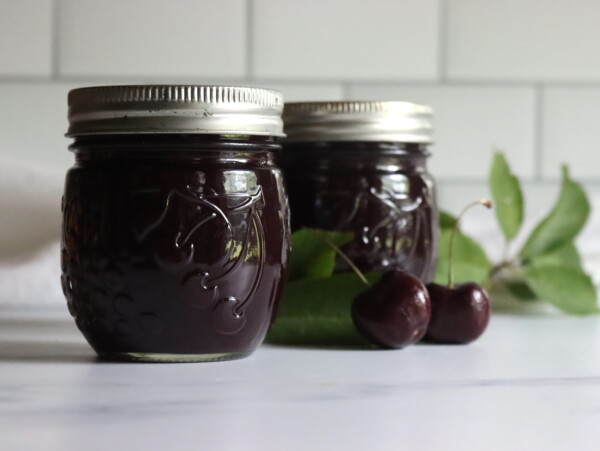
Very simple recipe
Glad it was helpful to you!